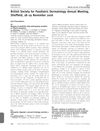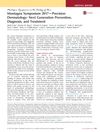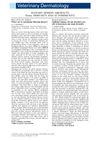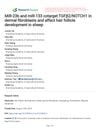Editors' Picks
October 2013
in “
Journal of Investigative Dermatology
”
collagen VII COL7A1 mTOR inhibitor sirolimus cutaneous squamous cell carcinomas high-molecular-mass hyaluronan HMM-HA dermal γδ T cells fibroblast growth factor 9 Fgf9 hair follicle regeneration IL-33 itchy dermatitis allergic inflammation collagen 7 rapamycin skin cancer hyaluronic acid T cells FGF9 hair growth interleukin-33 dermatitis allergies
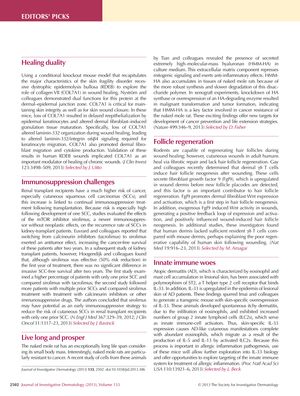
TLDR Collagen VII helps skin heal and stay strong, sirolimus may lower skin cancer risk in kidney transplant patients, high-molecular-mass hyaluronan helps naked mole rats resist cancer, dermal γδ T cells aid in hair growth in rodents, and overexpression of IL-33 in mouse skin causes itchiness, offering a model for studying allergic inflammation treatments.
In 2013, several studies were highlighted in the field of dermatology. Nyström and colleagues used a mouse model to demonstrate the dual functions of collagen VII (COL7A1) in maintaining skin integrity and promoting wound healing. Euvrard and colleagues reported that the mTOR inhibitor sirolimus could potentially reduce the risk of cutaneous squamous cell carcinomas in renal transplant recipients with only one prior SCC. Tian and colleagues found that high-molecular-mass hyaluronan (HMM-HA) in naked mole rats played a key role in their resistance to cancer. Gay and colleagues discovered that dermal γδ T cells secrete fibroblast growth factor 9 (Fgf9), which contributes to hair follicle regeneration in rodents. Lastly, Imai and colleagues generated a transgenic mouse with skin-specific overexpression of IL-33, which developed spontaneous itchy dermatitis, providing a model for further exploration into IL-33 biology and potential treatments for allergic inflammation.

